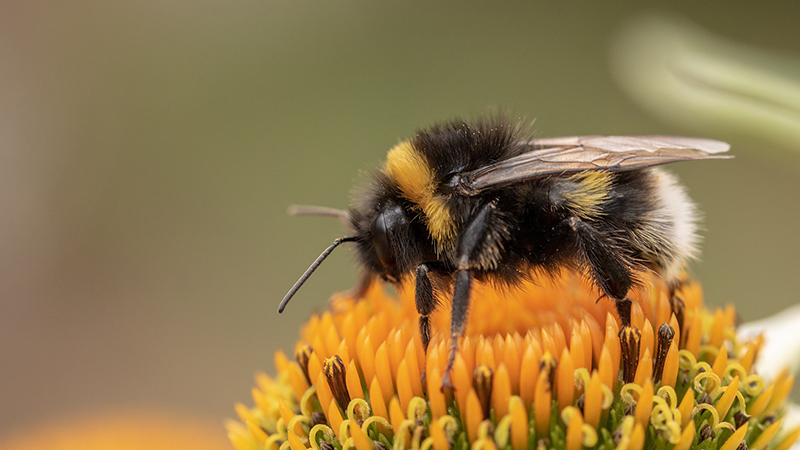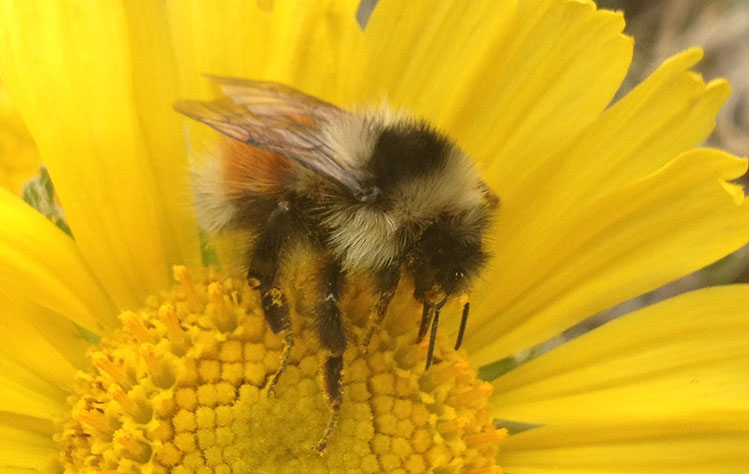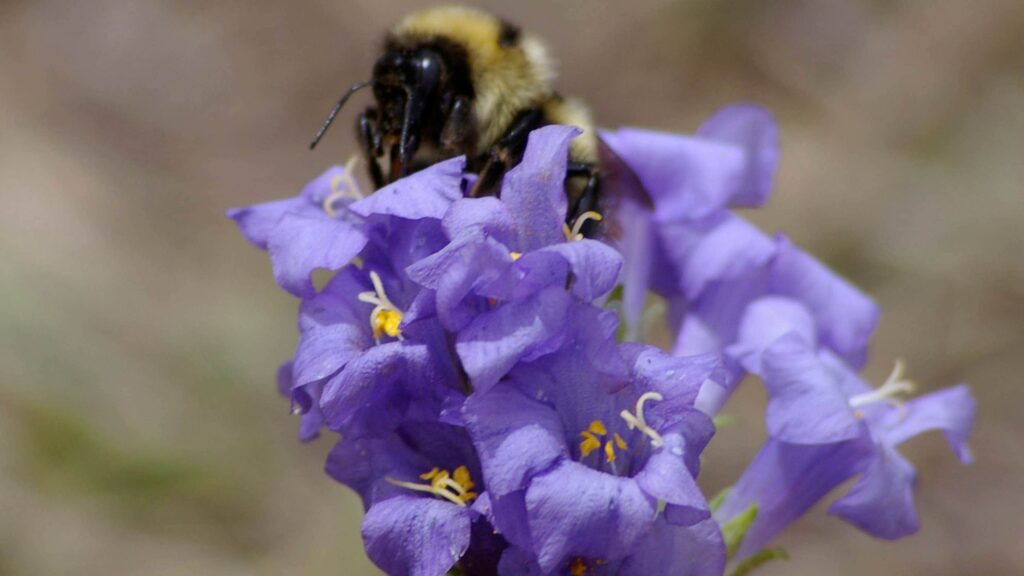
In a recent study from Missouri State University, researchers have found that rising temperatures due to climate change are having a detrimental impact on certain species of bumble bees. The study reveals that these bees are being forced to take shallow, rapid breaths, leading to increased energy consumption and a decrease in survival rates. Approximately half of the 45 bumble bee species in the United States are currently facing difficulties, with climate change being identified as a significant factor. Dr. Avery Russell, an assistant professor of biology at Missouri State University, has commented on the study, emphasizing the importance of understanding and addressing this issue.

This image is property of news.missouristate.edu.
Effects of Climate Change on Bumble Bees
Climate change has wide-ranging effects on various aspects of our natural environment, and one group of organisms that is particularly vulnerable to its impacts is bumble bees. These important pollinators play a vital role in the ecosystem, but their populations have been declining in recent years. The effects of climate change on bumble bees are multifaceted and require careful study and research to fully understand.
Shallow and Rapid Breathing
Recent research presented at the Society for Integrative and Comparative Biology highlights one of the effects of rising temperatures on bumble bees. As the temperatures increase, some bees are forced to take shallow, rapid breaths, essentially hyperventilating. This altered breathing pattern not only expends more energy but also reduces their chances of survival. The increased respiratory rate puts a strain on their body and makes it difficult for them to handle the changing climate conditions.
Energy Burn and Survival
The shallow and rapid breathing of bumble bees due to climate change leads to another significant consequence: higher energy expenditure. By hyperventilating, bees are burning more energy than necessary, which leaves them with fewer reserves to carry out essential tasks such as foraging for food or maintaining their hives. This increased energy demand puts stress on their already strained populations and further exacerbates their decline.
Species at Risk
Of the 45 bumble bee species in the United States, approximately half seem to be experiencing trouble. The exact reasons for these population declines are still unclear, but climate change is believed to play a significant role. Bumble bees are sensitive to changes in their habitat and are particularly affected by alterations in temperature and precipitation patterns. As our warming world continues to disrupt their natural environment, these beloved pollinators face an uncertain future.
Study and Research at Missouri State University
Missouri State University has been at the forefront of research on bumble bees and their response to climate change. The university’s Biology Department, led by Dr. Avery Russell, has been actively studying the impact of rising temperatures on bumble bee populations. Their research findings shed light on the complex relationship between climate change and bee behavior, which is crucial for developing effective conservation strategies.
Research Presentation at Society for Integrative and Comparative Biology
At the annual meeting of the Society for Integrative and Comparative Biology, Missouri State University researchers presented their latest findings on the effects of climate change on bumble bees. Their research highlighted the detrimental impact of rising temperatures on bee respiration rates, energy expenditure, and overall survival. The presentation served as an important platform for scholars and experts to discuss the challenges facing bumble bees and the urgent need for conservation efforts.
Dr. Avery Russell’s Comments
Dr. Avery Russell, an assistant professor of biology at Missouri State University, offered valuable insights into the study’s findings and the implications for bee conservation. In an interview with Science Magazine, Dr. Russell emphasized the importance of understanding the intricate relationship between climate change and bee behavior. He acknowledged that while climate change is not the sole cause of bumble bee declines, it undeniably contributes to their vulnerability and poses a significant threat to their survival.
Biology Department at Missouri State University
Missouri State University’s Biology Department is committed to advancing knowledge and understanding of bumble bees and their response to climate change. With a skilled team of researchers and dedicated faculty members, the department conducts groundbreaking research that contributes to the broader scientific community’s understanding of these important pollinators. Through their work, the department is actively raising awareness about the critical need for bee conservation.
The Impact of Rising Temperatures on Bumble Bees
As our planet continues to warm due to human-induced climate change, the impact on bumble bees becomes increasingly evident. The rising temperatures have profound effects on bee physiology, behavior, and overall survival. Understanding these impacts is crucial for developing effective conservation strategies and mitigating further population declines.
Increased Respiratory Rate
One of the most significant effects of rising temperatures on bumble bees is their increased respiratory rate. As the temperature rises, bees are forced to hyperventilate, taking shallow and rapid breaths. This altered breathing pattern puts a strain on their respiratory system and expends more energy than usual. The increased respiratory rate not only impacts individual bee health but also reduces their overall chances of survival.
Higher Energy Expenditure
The shallow and rapid breathing caused by climate change leads to another significant consequence: higher energy expenditure. Bees burn more energy when they hyperventilate, leaving them with fewer reserves for essential activities such as foraging or maintaining their hives. This greater energy demand puts additional stress on their already strained populations and hinders their ability to thrive in a changing environment.
Reduced Survival Rate
Ultimately, the combination of increased respiratory rate and higher energy expenditure leads to a reduced survival rate for bumble bees. By burning more energy and having fewer reserves, bees become more susceptible to various threats, including predation, disease, and scarcity of resources. These factors, coupled with the already detrimental effects of climate change on their habitat and food sources, put bumble bees at a heightened risk of population decline and even extinction.
Understanding the Relationship Between Climate Change and Bee Behavior
To effectively address the challenges facing bumble bees, it is crucial to understand the intricate relationship between climate change and their behavior. Various factors contribute to climate-induced changes in bee behavior, and unraveling these complexities can help guide conservation efforts and promote ecological resilience.
Causes of Climate-Induced Bee Behavior
Climate change affects bee behavior through multiple interconnected factors. Changes in temperature and precipitation patterns alter the availability of resources such as nectar and pollen, which impacts foraging patterns and overall food availability for bees. Additionally, changes in weather patterns can disrupt mating behaviors, hibernation, and nesting activities, further impacting bumble bee populations.
Hypothesized Links between Climate Change and Bee Behavior
While the exact links between climate change and bee behavior are still being studied, researchers have proposed several hypotheses. One hypothesis suggests that rising temperatures may directly affect bee brain functionality, influencing their cognitive abilities, learning, and decision-making. Another hypothesis proposes that changes in resource availability may lead to shifts in bumble bee’s feeding habits, foraging range, and even nest site selection. These potential links highlight the need for further research to fully comprehend the impacts of climate change on bee behavior.

This image is property of news.missouristate.edu.
Species Vulnerability to Climate Change
Bumble bees are not equally vulnerable to the impacts of climate change, with some species being at higher risk than others. Understanding species vulnerability is crucial for targeted conservation efforts and developing strategies to mitigate population declines.
Number of Bumble Bee Species at Risk
According to the latest research, approximately half of the 45 bumble bee species in the United States are experiencing population declines. The exact reasons for their vulnerability are still under investigation, but it is clear that climate change plays a significant role. Certain species may be more susceptible to changes in temperature, precipitation, and resource availability, making them more prone to population declines and local extinctions.
Unclear Reasons for Vulnerability
While the vulnerability of specific bumble bee species to climate change is evident, the exact reasons for this vulnerability are still unclear. Factors such as genetic variability, physiological traits, and ecological specialization may contribute to their sensitivity to environmental changes. Further research is needed to identify the underlying mechanisms and determine the specific factors that render certain species more vulnerable than others.
Bumble Bee Population Decline
The decline in bumble bee populations is a growing concern worldwide, and climate change is recognized as one of the contributing factors. Understanding the threats that bumble bees face is crucial for implementing effective conservation measures and reversing their decline.
Threats to Bumble Bee Population
Bumble bees face a multitude of threats that impact their populations. Habitat loss and degradation, pesticide use, invasive species, diseases, and climate change all contribute to the decline in their numbers. These threats often interact and exacerbate one another, leading to a cascading effect that puts bumble bees under immense pressure.
Climate Change as a Contributing Factor
While climate change is not the sole cause of bumble bee population decline, it is recognized as a contributing factor. The alterations in temperature and precipitation patterns disrupt bumble bees’ habitat, impacting the availability of floral resources, nesting sites, and suitable microclimates. As a result, bumble bees struggle to adapt and face increased competition from other species, further compromising their survival.

This image is property of news.webster.edu.
The Role of Missouri State University in Bumble Bee Research
Missouri State University acknowledges the urgency of bumble bee conservation and has taken significant steps to contribute to the scientific understanding of their response to climate change. Through research, education, and advocacy, the university aims to raise awareness about the crucial role of bumble bees and promote their protection.
Raising Awareness on Climate Change and Bee Conservation
Missouri State University actively raises awareness among its students, faculty, and the broader community about the impacts of climate change on bumble bees and the need for their conservation. By organizing seminars, workshops, and public outreach programs, the university fosters a sense of responsibility and empowers individuals to engage in sustainable practices.
Promoting Research on Bumble Bees
Missouri State University’s Biology Department plays a pivotal role in promoting research on bumble bees and their response to climate change. Through collaborations, grants, and cutting-edge research facilities, the department provides a robust platform for scientists to investigate the complex interplay between climate change, bee behavior, and population dynamics. This research enables evidence-based decision-making and empowers conservation efforts.
Research Presentation at Society for Integrative and Comparative Biology
The research conducted by Missouri State University researchers on the effects of climate change on bumble bees garnered significant attention at the annual meeting of the Society for Integrative and Comparative Biology. The presentation served as a platform for experts, scholars, and researchers to exchange knowledge, discuss challenges, and explore potential solutions.
Platform for Discussion on Climate Change and Bee Decline
The Society for Integrative and Comparative Biology meeting provided a crucial platform for scholars and experts to engage in meaningful discussions regarding climate change and its impact on bumble bee decline. By facilitating the exchange of ideas and promoting interdisciplinary collaboration, this platform contributes to the development of holistic approaches for addressing the conservation challenges facing these vital pollinators.
Findings and Insights from the Study
The research findings presented at the society meeting shed light on the detrimental effects of rising temperatures on bumble bee populations. The study highlighted the link between increased respiratory rates and higher energy expenditure, which negatively impacts bee survival. These insights provide valuable information for designing targeted conservation strategies and implementing measures to mitigate the adverse effects of climate change on bumble bees.

This image is property of www.science.org.
Dr. Avery Russell’s Comments on the Study
Dr. Avery Russell, an assistant professor of biology at Missouri State University, offered expert commentary on the study’s findings and the broader implications for climate change and bee behavior. As a leading scientist in the field, Dr. Russell’s insights provide valuable perspectives on the urgency of addressing the challenges facing bumble bees and the need for further research and conservation efforts.
Expert Opinion on Climate Change and Bee Behavior
Dr. Russell emphasized the importance of understanding the complex relationship between climate change and bee behavior. He highlighted that while climate change is not the sole cause of bumble bee declines, it contributes significantly to their vulnerability. Dr. Russell’s expert opinion underscores the urgency of addressing climate change as a contributing factor and implementing measures to protect bumble bees and their habitats.
Implications and Future Directions of the Research
Dr. Russell’s comments on the study shed light on the implications for future research and conservation efforts. He emphasized the need for continued research on the impacts of climate change on bee populations, including investigating the underlying mechanisms that render certain species more vulnerable than others. Dr. Russell’s insights provide a roadmap for future research directions and highlight the importance of interdisciplinary collaboration in addressing the challenges of climate change and bee decline.
Conclusion and Future Implications
Bumble bees, as crucial pollinators, face numerous challenges due to climate change. The effects of rising temperatures on their breathing patterns, energy expenditure, and overall survival are evident and demand urgent attention. Missouri State University’s research and the efforts of experts like Dr. Avery Russell shed light on these challenges, serving as a call to action for further research, education, and conservation.
Need for Further Research on Climate Change and Bee Adaptation
To effectively protect bumble bees and mitigate population declines, further research is essential. Research should focus on understanding the precise mechanisms by which climate change impacts bumble bee behavior, biology, and population dynamics. This knowledge will enable the development of targeted conservation strategies that address the specific needs of different bumble bee species and drive an evidence-based approach to sustainability.
Conservation Efforts to Protect Bumble Bees
Addressing the decline of bumble bee populations requires a multifaceted approach that encompasses habitat protection, reduction of pesticide use, promotion of sustainable agriculture practices, and increased public awareness. Missouri State University, through its research, education, and advocacy efforts, is actively contributing to the collective effort in conserving bumble bees. By empowering individuals with knowledge and fostering a sense of responsibility, we can ensure the long-term survival of these vital pollinators and the ecosystems they support.

This image is property of static.foxnews.com.